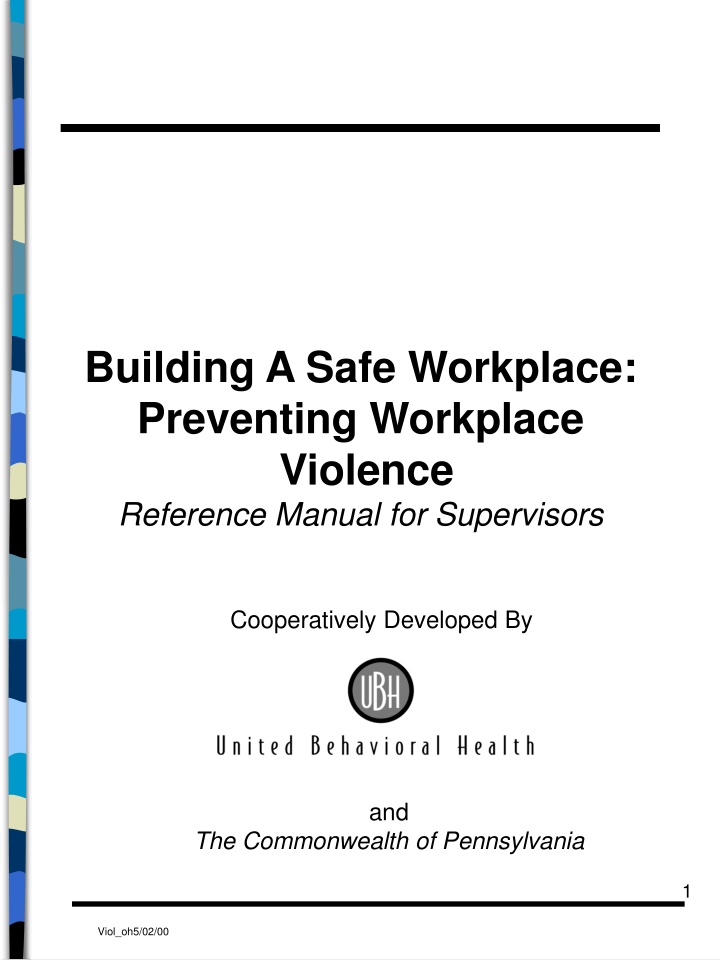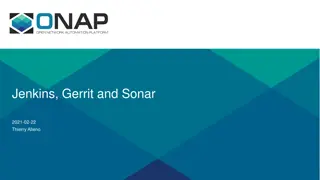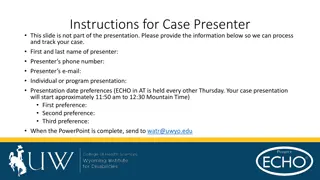Solving Physics Problems: Sonar Echo, Wavelength, Sound Intensity, Frequency Shift
Explore solutions to physics problems involving sonar echo depth calculation, radio wave wavelength computation, sound intensity determination, and frequency shift due to a moving source. Learn about these concepts through practical examples and applications.
Download Presentation

Please find below an Image/Link to download the presentation.
The content on the website is provided AS IS for your information and personal use only. It may not be sold, licensed, or shared on other websites without obtaining consent from the author.If you encounter any issues during the download, it is possible that the publisher has removed the file from their server.
You are allowed to download the files provided on this website for personal or commercial use, subject to the condition that they are used lawfully. All files are the property of their respective owners.
The content on the website is provided AS IS for your information and personal use only. It may not be sold, licensed, or shared on other websites without obtaining consent from the author.
E N D
Presentation Transcript
Building A Safe Workplace: Preventing Workplace Violence Reference Manual for Supervisors Cooperatively Developed By and The Commonwealth of Pennsylvania 1 Viol_oh5/02/00
Program Objectives 1. Participants will understand the specific role of management and supervisory personnel in maintaining a safe place to work. 2. Participants will be able to identify action steps relating to a report of actual or potential violence. 3. Participants will be able to recognize resources available following an incident of workplace violence. 4. Participants will understand the impact of violence on employees and the workplace. 2 Viol_oh5/02/00
Ensuring A Safe Place to Work: Prevention Develop/ communicate agency policy and procedure Identify/address situations Report concerns Involve employees Provide training Manage change Provide evaluations/ feedback Evaluate processes Take safety/ security measures Inform and communicate Provide SEAP and other benefit information 3 Viol_oh5/02/00
Building Employee Awareness 1. Be aware of changes and how they occur in people. 2. Be understanding of personal situations. 3. Pay attention to behavior. 4. Be truthful. 5. Know where to go for help. 4 Viol_oh5/02/00
Tips for Dealing with Domestic Violence Let the employee know what you have observed. Express concern. Make a statement of support. Offer a SEAP referral. Discuss confidentiality. 5 Viol_oh5/02/00
Behaviors to Watch For Regardless of a situation s potential for violence, problems must be addressed promptly. Attendance Poor health and hygiene Issues requiring excessive amounts of supervisor/ manager s time Behavior changes Fascination with guns or other weapons Decreased productivity Work pattern Possible substance abuse Relationships Concentration Stress Safety concerns Excuses Depression 6 Viol_oh5/02/00
A Reminder Some behaviors may indicate a potential for workplace violence. Remember to include SEAP when intervening. 7 Viol_oh5/02/00
The Importance of Reporting Incidents Employees are to report any workplace situation which may contribute to the occurrence of violence to their supervisor in accordance with agency policy. Supervisors are to take appropriate action and report back to the employee in a timely manner. 8 Viol_oh5/02/00
Dos and Donts for Supervisors Don t... try to diagnose the problem. discuss drinking unless it occurs on the job. moralize. Restrict criticism to job performance or attendance. be misled by sympathy evoking tactics. cover up for a friend. put the person in the basement to file reports. ignore the problem or the signs. Do point out that SEAP is available, confidential, and can help. make it clear that the Commonwealth is concerned only with job performance. explain that the employee must decide for him or her self whether or not to seek assistance. remember that chemical dependence is a progressive disease. remember that as a supervisor, it is your responsibility to respond to any threat or actual act of violence. 9 Viol_oh5/02/00
The Importance of Reporting Incidents All occurrences of workplace violence must be reported to your supervisor as soon as possible. Use the Reporting Data Sheet for Incidents of Workplace Violence. Where available reports may be made electronically. Any report made in good faith will be accepted. 10 Viol_oh5/02/00
Documentation Checklist Documentation should include specifics to describe a particular incident or an employee s inappropriate behavior. When preparing your documentation, it may be helpful to review the following checklist to ensure completeness and accuracy. Select elements which apply. ___Did you record the documentation promptly, while your memory was still fresh? ___Have you indicated the date, time, and location of the incident(s) documented? ___Did you record the action taken or the behavior exhibited? ___Did you indicate the person(s) or work products involved? ___Have you listed the specific performance standards violated or exceeded? ___Did you record the consequences of the action or behavior on the employee s total work performance and/or operation of the work unit? ___Have you been objective, recording observations and not impressions? ___Did you indicate your response to the action of the employee s behavior? ___Did you indicate the employee s reaction to your efforts to modify his/her behavior? 11 Viol_oh5/02/00
Workplace Violence Coordinator/ Response Team Purpose: 1. Assess the vulnerability to workplace violence. 2. Reach agreement on preventive actions to be taken. 3. Implement plans for responding to acts of violence. 4. Recommend/ implement related training programs. 5. Implement plans for responding to acts of violence Establish telephone teams. Develop an emergency evacuation plan Establish a second source of communication Assign personnel to assist in calming witnesses Increase security measures Keep employees informed Suggested Team Membership: Senior Site Manager Human Resource Personnel Legal Counsel Security/ Safety Professional Psychologist SEAP Professional Medical/ Health Professional Law Enforcement Union and/ or Employee Representative 12 Viol_oh5/02/00
Taking Action As a part of their function, the Workplace Violence Coordinator will activate pre-designed plans and procedures for: Getting help Communication Issues Legal Issues Media Interaction Maintaining Safety & Order 13 Viol_oh5/02/00
Responding to a Threat: Threat Assessment The Workplace Violence Coordinator will, in accordance with agency policy: available). 2. Confirm incident. 3. Interview witnesses. 1. Activate the Threat Assessment Team (if 4. Interview manager/ supervisor,co-workers. 5. Check personnel file. 6. Call law enforcement/ security. 7. Involve SEAP. 8. Interview the threat maker. 9. Inform target. 10. Activate response plan. 14 Viol_oh5/02/00
Threat of Violence Flow Chart Incident occurs Notify Personnel Treat as emergency. Notify security, then Personnel, management Violence Coordinator(VC) and/or Supervisor assess whether life threatening NO YES Gather facts Contact appropriate functions- security, violence coordinator, management, SEAP, others on a need to know basis YES Expand assessment team to include legal, Medical, others, as needed Assess whether reasonable validity is established to continue the investigation. Develop initial action plan(e.g, determine security matters, duty to warn , plan for confrontation of employee, suspension issues, medical evaluation needs NO Bring to closure Conduct more thorough investigations; interview witnesses, co-workers Assessment team to review all of the facts and develop a long term action plan addressing disciplinary action, security needs, management changes, return to work plan, prevention issues, etc. Remember: Clarify confidentiality and anonymity boundaries early Document everything in writing Debrief 15 Viol_oh5/02/00
How Trauma Affects Employees Stage One: Emotional Reaction Stage Two: Impact Stage Three: Reconciliation 16 Viol_oh5/02/00
Critical Incident Stress Debriefing (CISD) Definition Structured informal confidential discussion Education ,validation , and support Reassurance, opportunity to vent Opportunity to vent Not counseling Purpose and goals To facilitate recovery & related concerns Process Introduction Facts Thoughts Reactions Symptoms Teaching Re-entry 17 Viol_oh5/02/00























